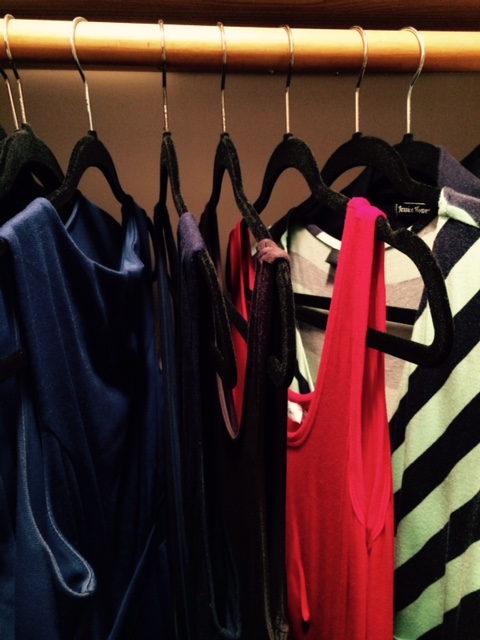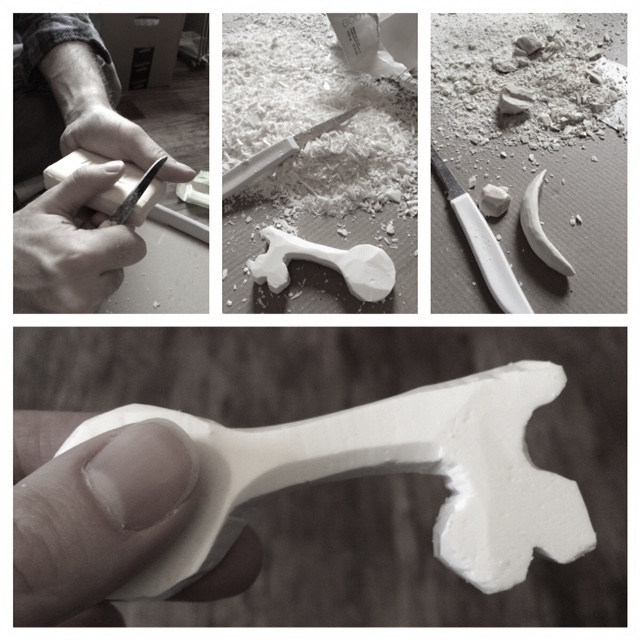|
Did you know that Prince (or The Artist Formerly Known as Prince, or that symbol thingy he tried for awhile, or whatever he’s calling himself these days) was born epileptic?
Yes, the Purple One, that great Purple Yoda from Minnesota himself, used to struggle with seizures as a child. He was fortunate enough to outgrow the disease, but still, he suffered. And how appropriate that he associates himself with purple, the color of royalty, the color associated with epilepsy. Today is Epilepsy Awareness Day, so I decided to wear purple. It’s a color I don’t wear often, but perhaps I should start—epilepsy is more common than you might think: as many as 1 in 26 people will struggle with seizures at some point in their lifetime. (And feel free to fact-check that one—it’s straight from the Epilepsy Foundation.) 1 in 26. You’d be rich in Vegas with those odds. Even though I had a two-hour-long seizure as a toddler, and I took medication for a few years afterwards, I never thought I’d be that 1 in 26. I thought I had my brain under control, that it was an isolated incident. But I was that 1 in 26. Think about that for a moment: that’s pretty much one kid in every classroom in America. So this is something that people need to know about. There are a lot of weird misconceptions about seizures: epilepsy has been associated with the cycles of the moon, with prophecy, and excessive masturbation. (I wish I were kidding.) It was even believed by some to be divine, a direct link to God—like Harry transmitting messages to and from The Big Giant Head on Third Rock from the Sun back in the 90’s. The Greeks called it a sacred disease, and it has been called the genius disease. It has also been called witchcraft, criminal insanity, a curse, and a contagion, and its stigma is so profound that epileptics were banned from marrying in the United Kingdom until the 1970’s, and in India and China it is still considered valid grounds to deny marriage rights. (I wish I were kidding about that, too.) It’s not contagious, but it is stress-aggravated. And these misconceptions are both stressful and aggravating. (And frustrating, come to think of it—at least, for this epileptic…) Epilepsy is a seizure disorder—epileptics are prone to recurrent, unprovoked seizures. A seizure can be so many different things: most people think of the type where the body convulses. That’s one type. But there are others, too. I’ve had convulsive seizures, but lately, I’ve been having complex partial seizures, which basically means that the seizure starts in only a part of my brain (that’s what’s partial about it), and I usually mumble something and do some sort of action to accompany the gibberish. (Marching is one of my favorites, and I also like to take off clothing and twiddle my thumbs.) Yeah, I’m exhausted and pretty unaware after they happen, and they’re a pain in the butt, but I think, more than anything else, seizures are scary. I think they are scarier for those witnessing them than those who have them. So educate yourself. Learn about this disease so that it doesn’t scare you. If you see someone having a seizure, protect them from hurting themselves (but don’t restrain them or put anything in their mouth), and pay attention to how long it lasts—if it is longer than five minutes, brain damage can occur, so be sure to call for help. And go wear some purple—just like Prince. I put some effort into my appearance yesterday. I actually put on a dress (which is like a twice-a-year thing for me). I wore a bracelet (also a biannual phenomenon) and shaved my legs (I won’t comment on the frequency of that occurrence). It was a dress I actually loved, too—I felt good in it. And the bracelet was pretty. I used a new razor on my legs, too, which is one of the best feelings ever. I styled my hair using actual hair products. I put on some makeup. I wore new shoes. I spritzed on my favorite perfume.
What was the occasion? There wasn’t one. I was just leaving my house. My sister-in-law took me to run some errands. We went to the grocery store and a gas station. We stopped by another store to make a return. We did eat sushi—that was special, but I was still the only person in the restaurant wearing a dress. I have a closet full of clothes that I don’t love, that don’t quite fit right. I have piles of shirts that are too short or too baggy or too tight. I have jeans that gap in the back or make my legs look like cased sausages. I have shoes that hurt and sweaters that have armpits full of pills and moth holes. Time and time again, I buy things that I do not completely love. I have clothes that I do love, like that dress. And jeans that fit just right. And sweaters that feel like a hug. And shirts that feel like custom couture. And even though I never wear them, I love these things—or, rather, I love the idea of them. They honestly feel like costumes, and I often feel like a child playing dress-up when I dare to wear them. That wardrobe belongs to someone I have not yet become, or someone I only occasionally pretend to be. So I keep buying stuff that I don’t love, stuff that doesn’t even fit properly, because I cannot wear a lie. I think I’ve been waiting for myself to become someone worthy of those beautiful things I never wear—some kind of self-confident professional who looks capable and ready for anything, and because I do not feel self-confident or professional or capable, I wear things that reflect that belief. It feels like sacrilege to wear my loveliest things, like perpetrating a lie. It recently occurred to me that I cannot wait for myself to magically turn into this confident professional I always thought I’d effortlessly become after college—especially given my current circumstances. (It’s hard to be professional when you’re unemployed.) It’s a complete waste to buy and wear things that I don’t love and to let the things that I do love wilt in the back of my closet. So this year, as I spring clean, I am getting rid of all that I do not love—and not just my ill-fitting clothes. It is time to abandon those ideas that I am unworthy of beauty because I have not accomplished or become what I thought I would. It is time for me to embrace the wardrobe of that woman I want to be—to actually wear my lovely things and only buy things that I love, things that bolster my confidence and my self-worth, things that make me feel capable and vibrant. Because life is a special enough occasion to dress up. When my brother graduated from high school in 2009, I took him to see Rob Bell speak. Bell was promoting his book Drops Like Stars, which is subtitled “A Few Thoughts on Creativity and Suffering.” At the time, it was only the creativity part that interested me. I wasn’t so keen on hearing him talk about suffering. I was quite certain creativity could exist without it.
But it was Rob Bell, so I was still excited. Everyone in the audience was given a note card and a bar of soap upon entering. Weird. But fun and creative, too, right? I assumed we’d be drawing something on the note card (Fun! I love to draw!), make a huge mess, and use the soap to clean up afterwards. Yeah, that didn’t happen. Rob Bell spoke mainly about how suffering can be an excellent catalyst for art, because it connects us to other people by forcing us to understand their suffering through our own. He demonstrated this with that note card. He told us about a friend who had broken his arm and how he didn’t really understand what that friend had been through until he broke his own arm and suffered the same sorts of inconveniences. So he asked us to write “I know how you feel” on our note card using our non-dominant hand. And since we all had done it, had all suffered the same inconvenience, he had us trade note cards with the person next to us as an exercise in empathy. (I ended up with my sister’s. I still have it.) I was a bit disappointed. I had been expecting a more “creative” exercise, but I guess it was a way to pass the time. Whatever. Intermission happened, and I could only stare at that bar of soap, wondering what sort of “creative” exercise we’d be asked to do. Wash each other’s feet? Take a bite out of it as a reminder to watch our words? Throw it across the auditorium? Send it to troops in Afghanistan or children in Africa? Give it to the homeless? I had no idea. When Bell took the stage one more, he began to talk more about suffering. It was a rather uncomfortable topic. I wanted to hear about art. I had come to hear about creativity, not suffering, and so far, I only knew about his friend with a broken arm and that I could write reasonably well with my left hand. I wanted to hear him speak about art, and all he did was talk about suffering. And then it got even worse: he began to talk about the soap. He told us to take our bars of soap and carve them. Not then and there, but sometime, when we were alone, to carve our bars of soap, to strip away the excess, to get rid of the nonessential, to reveal what was hidden within. To make it into something new and beautiful. He talked about suffering as a sort of “stripping away” of the unnecessary. It is painful, he said, but suffering reveals us. It makes us naked. It strips us of pretense and reveals who we truly are. He talked about how suffering causes us to let go of everything except the essential, and when all excess is eliminated, the beauty is revealed. It brings to mind that Michelangelo quote: “I saw an angel in the marble and carved until I set him free.” He then showed us photographs of hundreds of soap carvings that people had made and sent him after attending his seminar. The photographs were cool, but...was suffering really necessary for art? I doubted that I really had to suffer in order to shave my soap into the shape of a flower. Even if I cut my finger in the process. The suffering seemed rather unnecessary. The talk about suffering made me uncomfortable. It almost seemed to imply that suffering produced and inspired and drove creativity, and I was perfectly content to create without the baggage of suffering. I wanted my life to be as easy and as comfortable as possible. I couldn’t see any non-essentials in my life. It was all part of me, and I didn’t want to let go of any part of it. I see now that I just hadn’t suffered enough at the time to truly appreciate what Rob Bell was trying to show us with that soap. The exercise seemed cute and crafty and like something a middle school art teacher might try, but I’ll admit that I felt a little cheated when I left the theater with an unused bar of soap and a used note card in my pocket. I thought I was going to be inspired by him. Instead, I was just confused. So I put the soap in my bathroom cabinet, and there it stayed. For six years. Until yesterday. I don’t see my brother very often anymore—our lives are just on different trajectories—so when he called and asked to visit yesterday, I was elated. We both love to make things, so when he asked what we should spend the day doing, I remembered that soap, decided that I had finally suffered enough to understand what Rob Bell was trying to say (and that my brother had, too), so…we carved. I remembered those pictures Rob Bell had shown us. People had revealed and discovered beautiful things within those humble bricks of soap. And that reveal could only happen through the act of cutting into that soap, through taking away what had started as a part of the whole. So I found a paring knife, unwrapped the bar, and began to carve, curling away ribbons and shreds. I had no idea what it was going to be until it was done—and then it was obvious. It was a key. Of course. My brother ended up with a sliver of moon, which I declared was a new moon. His bar was brittle and broke several times, so he lost much more of his original product than I had, but his finished product was beautiful nonetheless, and nothing like what either of us had anticipated it would be, or perhaps even what he had intended for it to be. Because, as I am learning, our intentions don’t really matter very much. Despite our best efforts to make our lives to exactly as we want them to and exactly as we think they should, things break. And disappointment happens. And the unexpected. And detours. And we are forced to endure this stripping away—it really is for our good—so that we can know what it truly is that we are meant to be. |
Old Stuff.
January 2023
Categories.
All
|



 RSS Feed
RSS Feed


